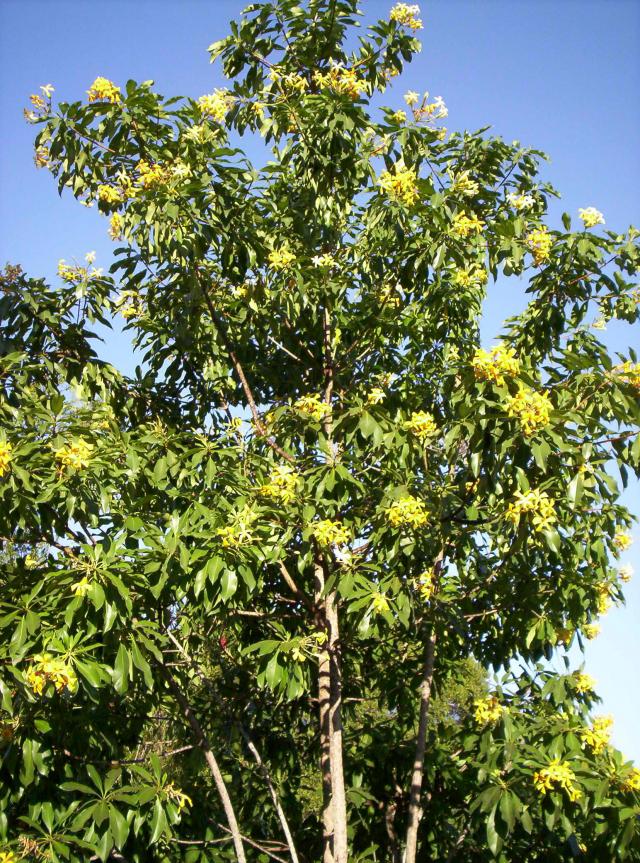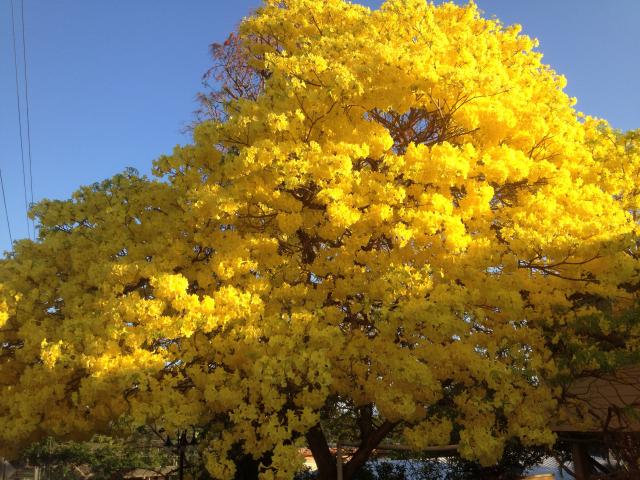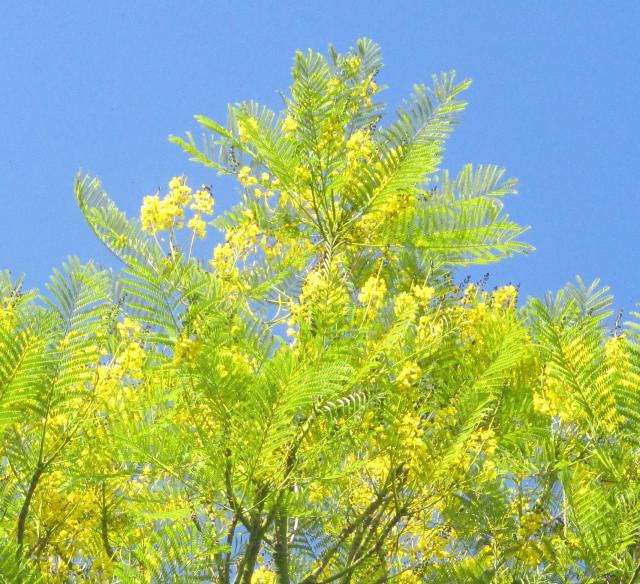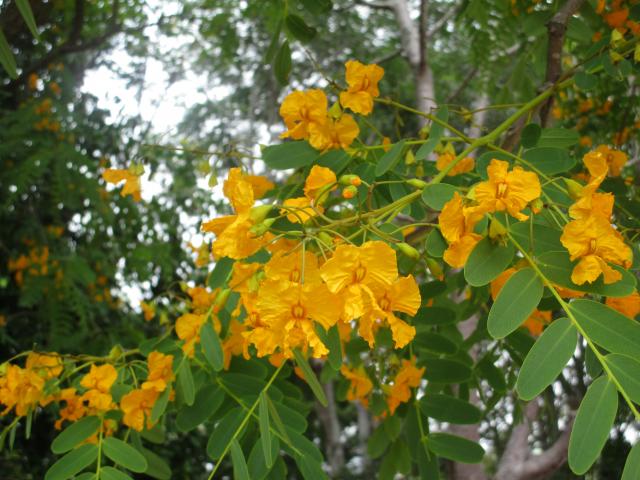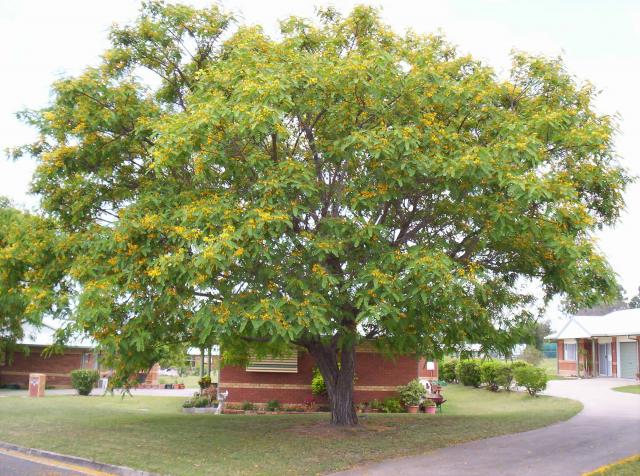Just about every town in Central Queensland has a skyline that is a blend of blooming trees in every colour imaginable with the yellow blossoming trees creating such feature.
While most of these trees are a little too big for the average home garden, they would make a worthy addition to a small acreage.
One very spectacular yellow-flowering small shade tree that drive around the Rockhampton will reveal in the coming weeks is the Tabebuia chrysantha or Golden trumpet tree. Tabebuia chrysantha is an ornamental tree known for its spectacular trumpet-like yellow flowers.
This tree should grow in both the coastal areas as well dryer locations like Mount Morgan.
This Tabebuia is most striking in the spring when it is filled with a profusion of golden-yellow flowers.
The lack of leaves during the bloom period makes it extremely showy.
Occasionally it will flower a second time in late summer.
The tree located in Yewdale Drive in Rockhampton is one of the largest and best flowering in Central Queensland.
You could expect this tree to grow to about 8 metres high.
It is one of many beautiful yellow flowering trees that have or soon will be in full bloom.
I have to admit I do love this time of the year for the masses of yellowing blooming trees.
One unusual yellow flowering tree that will be starting bloom in the coming weeks is the Mexican Tree Fern or Schizolobum parahybrum.
It will produce masses of yellow flowers that will cover the entire canopy of the tree that makes a delightful contrast to the trees green trunk.
A native of the Brazilian rainforests, in its natural habitat it acts as a canopy tree, but if planted in an open situation, it will grow up to ten metres as a single stem.
It is not unheard of for this tree to grow at the rate of two metres per year, and it has foliage that is similar in appearance to the Poinciana, only longer.
Pruning the juvenile tree at around head height, making a multi-trunked specimen helps to control the height.
Moranbah has for many years has had some of the best flowering specimens.
The Mexican Tree Fern will adapt to quite a wide variety of conditions, from being in full hot sunlight to cool heavy shade, making it suitable for a number of garden styles.
There is a very attractive flowering specimen growing in the Rockhampton Botanic Gardens.
A unique flowering tree with a common type flower but unusual foliage is the tree is the Hymenosporum flavum or Native Frangipani and it is unlike the common Frangipani.
As it does not have the poisonous milky sap just the beautiful perfumed flowers.
It is a bushy tree growing up to nine metres high for most well drained soils.
It will produce aromatic cream to deep yellow tubular flowers in spring.
This is a very spectacular flowering tree with horizontally spreading branches.
You can see this tree flowering along the playground fence at Pilbeam Park in North Rockhampton.
Along Dean Street in North Rockhampton is the Tipuana tipu or Racehorse Tree or Pride of Bolivia.
It is a fast-growing, shade tree with masses of bright yellow flowers during the warm months of the year.
This is a hardy and adaptable tree growing up to 10 metres in height in most soils and is drought and frost tolerant.
Tipuana has a round crown and large extending canopy cover make it an excellent shade tree.
There are many great examples of this tree growing in Gracemere and Mount Morgan.
Then there is the original Xanthostemon or Golden Penda that has been sold in Central Queensland coming on 40 years.
While there are a number of dwarf hybrids Xanthostemons the Xanthostemon chrysanthus is still one of the best and provides great flowering displays.
It is best described as a small pyramid shaped tree, with bright yellow, almost pom pom-like flowers.
The plant is actually a relative of the Bottlebrushes and Melaleucas, which grow so successfully in local gardens.
It can grow up eight metres and can foliage almost to the ground.
One of the best examples of this tree can be seen growing in Taranganba on the Capricorn Coast.
Xanthostemons will be a magnet for honey-eating birds, attracting to the nectar-laden flowers.


